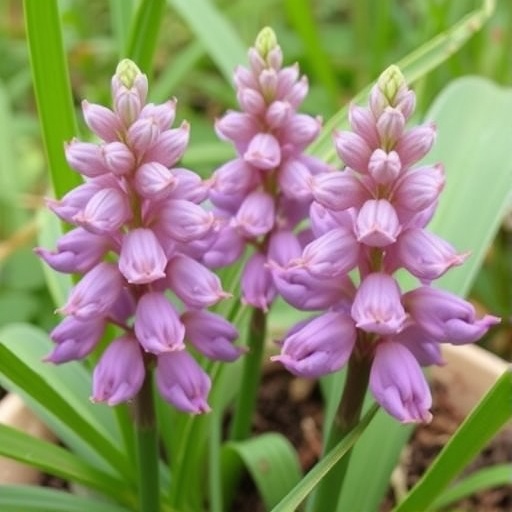In a groundbreaking study that illuminates the complexities of plant reproduction, researchers have delved deep into the hybridization mechanisms and embryological processes that establish reproductive barriers within the genus Dactylorhiza, a group of orchids known for their stunning floral diversity. This research not only provides insights into the intricate reproductive strategies of these plants, but also adds to our understanding of evolutionary biology and the ways in which hybridization can affect species integrity.
The study, conducted by a team of researchers led by Naczk, has focused on how hybridization among different Dactylorhiza species can lead to the formation of viable hybrids, which in turn poses significant questions regarding species classification and conservation. As orchids are one of the most diverse families of flowering plants, understanding their reproductive strategies is crucial for preserving biodiversity. The findings highlight the complexities involved in the reproductive processes, offering a new perspective on the dynamics of plant speciation.
Dactylorhiza orchids are commonly found in Eurasia, thriving in a variety of habitats, from moist meadows to temperate forests. Their captivating flowers often attract both pollinators and plant enthusiasts alike. However, this allure conceals a fascinating biological narrative regarding reproductive barriers that maintain species integrity. The current research offers a closer examination of how hybridization occurs and the subsequent impact on genetic diversity within the genus.
Hybridization is a natural event that occurs when two distinct plant species cross-pollinate, resulting in offspring that may possess traits from both parent species. While this phenomenon can lead to novel traits and increased genetic variation, it can also result in reproductive barriers that prevent successful mating between hybrid descendants and their parent species. The researchers employed advanced genetic and molecular techniques to explore these patterns in Dactylorhiza orchids, allowing for a nuanced understanding of their reproductive ecology.
One of the key findings of the study is the role of embryological development in influencing hybrid viability. It appears that specific patterns of embryo development, influenced by the genetic makeup of both parent species, play a pivotal role in determining whether a hybrid can successfully develop into a mature plant. The team identified certain embryological constraints that can inhibit hybrid success, providing evidence for the importance of developmental pathways in the establishment of reproductive barriers.
Moreover, the research accentuates the impact of environmental factors on hybridization and embryological success. As climate change continues to alter habitats and ecological interactions, understanding how these changes affect hybridization processes is more critical than ever. The findings hint at the potential for changing environmental conditions to foster hybridization events that could lead to new species or potentially threaten existing ones.
The intricacies of hybridization in Dactylorhiza also reflect broader ecological principles. Hybrid plants can exhibit increased adaptability to varying environments, which may aid in their survival amid rapidly changing climate conditions. However, while hybridization may offer short-term adaptive advantages, it can also lead to unforeseen consequences for plant populations, including loss of genetic purity and local extinction of parent species.
Another significant aspect of the research underscores the genetic underpinnings of reproductive barriers. By analyzing the genomes of various Dactylorhiza species, the team uncovered specific genetic markers associated with reproductive isolation. These markers serve as crucial indicators of how closely related different species are and how likely they are to hybridize in natural settings.
The implications of these findings extend beyond Dactylorhiza alone. As scientists strive to conserve plant biodiversity, understanding hybridization’s role in speciation becomes increasingly relevant. This knowledge can inform conservation strategies, particularly in regions where human activity and climate change are accelerating the frequency of hybridization events.
Additionally, the potential application of this research in horticulture cannot be overstated. With the increasing popularity of orchid cultivation, the insights derived from studying Dactylorhiza’s hybridization and reproductive patterns may allow cultivators to create hybrids with desirable traits, including enhanced resilience and unique flower characteristics.
In conclusion, the work conducted by Naczk and colleagues significantly advances the understanding of the evolutionary dynamics in Dactylorhiza orchids. By shedding light on the complexities of hybridization and embryo development, this research paves the way for further exploration in plant reproductive biology and its applications in conservation and horticulture.
As the scientific community continues to grapple with the implications of hybridization, this study stands as a testament to the intricate balance of nature. It reminds us that understanding the mechanisms of life is key to preserving the rich tapestry of biodiversity that sustains our planet.
In the grand scheme of plant evolution and ecological resilience, the findings surrounding Dactylorhiza hybridization present an illuminating glimpse into the future of these remarkable orchids, underscoring the crucial interplay between genetic forces and environmental factors in shaping the botanical world.
Subject of Research: Hybridization and embryological patterns in Dactylorhiza orchids
Article Title: Hybridization and embryological patterns underpinning reproductive barriers in Dactylorhiza (Orchidaceae).
Article References:
Naczk, A.M., Kapusta, M., Kolano, B. et al. Hybridization and embryological patterns underpinning reproductive barriers in Dactylorhiza (Orchidaceae).
Sci Rep 15, 36824 (2025). https://doi.org/10.1038/s41598-025-24871-2
Image Credits: AI Generated
DOI:
Keywords: Hybridization, reproductive barriers, Dactylorhiza, orchids, embryology, biodiversity.




